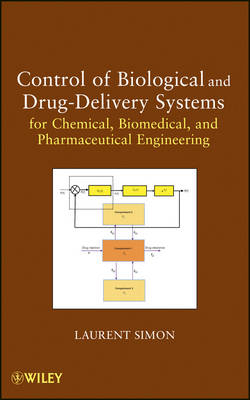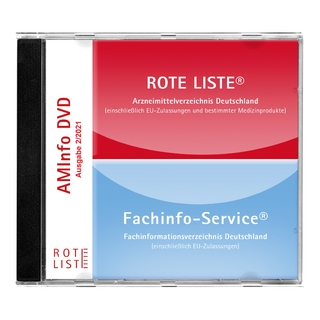
Control of Biological and Drug–Delivery Systems for Chemical, Biomedical, and Pharmaceutical Engineering
John Wiley & Sons Inc (Hersteller)
978-1-118-39649-0 (ISBN)
- Keine Verlagsinformationen verfügbar
- Artikel merken
Enables readers to apply process dynamics and control theory to solve bioprocess and drug delivery problems The control of biological and drug delivery systems is critical to the health of millions of people worldwide. As a result, researchers in systems biology and drug delivery rely on process dynamics and control theory to build our knowledge of cell behavior and to develop more effective therapeutics, controlled release devices, and drug administration protocols to manage disease. Written by a leading expert and educator in the field, this text helps readers develop a deep understanding of process dynamics and control theory in order to analyze and solve a broad range of problems in bioprocess and drug delivery systems. For example, readers will learn how stability criteria can be used to gain new insights into the regulation of biological pathways and lung mechanics. They'll also learn how the concept of a time constant is used to capture the dynamics of diffusive processes.
Readers will also master such topics as external disturbances, transfer functions, and input/output models with the support of the author's clear explanations, as well as: Detailed examples from the biological sciences and novel drug delivery technologies 160 end-of-chapter problems with step-by-step solutions Demonstrations of how computational software such as MATLAB and Mathematica solve complex drug delivery problems Control of Biological and Drug-Delivery Systems for Chemical, Biomedical, and Pharmaceutical Engineering is written primarily for undergraduate chemical and biomedical engineering students; however, it is also recommended for students and researchers in pharmaceutical engineering, process control, and systems biology. All readers will gain a new perspective on process dynamics and control theory that will enable them to develop new and better technologies and therapeutics to treat human disease.
LAURENT SIMON, PhD, is Associate Professor of Chemical Engineering and Associate Director of the Pharmaceutical Engineering Program at New Jersey Institute of Technology. His research and teaching interests focus on modeling, analysis, and control of drug delivery systems. Dr. Simon is the author of Laboratory Online, a series of educational and interactive modules that help engineers build a strong understanding of drug delivery technologies and their underlying engineering principles. During his time at NJIT, Dr. Simon has received the Excellence in Teaching Award, Master Teacher Designation, and Newark College of Engineering Saul K. Fenster Innovation in Engineering Education Award.
1. Introduction 1.1 The Role of Process Dynamics and Control in Branches of Biology 1.2 The Role of Process Dynamics and Control in Drug-Delivery Systems 1.3 Instrumentation 1.4 Summary 2. Mathematical Models 2.1 Background 2.2 Dynamics of Bioreactors 2.3 One- and Two-Compartment Models 2.4 Enzyme Kinetics 2.5 Summary 3. Linearization and Deviation Variables 3.1 Computer Simulations 3.2 Linearization of Systems 3.3 Glycolytic Oscillation 3.4 Hodgkin-Huxley Model 3.5 Summary 4. Stability Considerations 4.1 Definition of Stability 4.2 Steady-State Conditions and Equilibrium Points 4.3 Phase-Plane Diagrams 4.4 Population Kinetics 4.5 Dynamics of Bioreactors 4.6 Glycolytic Oscillation 4.7 Hodgkin-Huxley Model 4.8 Summary 5. Laplace Transforms of Linear Systems 5.1 Definitions of Laplace Transforms 5.2 Properties of Laplace Transforms 5.3 Laplace Transforms of Functions, Derivatives and Integrals 5.4 Laplace Transforms of Linear Ordinary and Partial Differential Equations 5.5 Continuous Fermentation 5.6 Two-Compartment Models 5.7 Gene Regulation 5.8 Summary 6. Inverse Laplace Transforms 6.1 Heaviside Expansions 6.2 Residue Theorem 6.3 Continuous Fermentation 6.4 Degradation of Plasmid DNA 6.5 Constant-Rate Intravenous Infusion 6.6 Transdermal Drug-Delivery Systems 6.7 Summary 7. Transfer Functions 7.1 Input-Output Models 7.2 Derivation of Transfer Functions 7.3 One- and Two-Compartment Models: Michaelis-Menten Kinetics 7.4 Controlled-Release Systems 7.5 Summary 8. Dynamic Behaviors of Typical Plants 8.1 First-, Second- and Higher-Order Systems 8.2 Reduced-Order Models 8.3 Transcendental Transfer Functions 8.4 Time Responses of Systems with Rational Transfer Functions 8.5 Time Responses of Systems with Transcendental Transfer Functions 8.6 Bone Regeneration 8.7 Nitric Oxide Transport to Pulmonary Arterioles 8.8 Transdermal Drug Delivery 8.9 Summary 9. Closed-Loop Responses with P, PI and PID Controllers 9.1 Block Diagram of Closed-Loop Systems 9.2 Proportional Control 9.3 Proportional-Integral Control 9.4 Proportional-Integral-Derivative Control 9.5 Total Sugar Concentration in a Glutamic Acid Production 9.6 Temperature Control of Fermentations 9.7 Dissolved Oxygen Concentration 9.8 Summary 10. Frequency Response Analysis 10.1 Frequency Response for Linear Systems 10.2 Bode Diagrams 10.3 Nyquist Plots 10.4 Transdermal Drug Delivery 10.5 Compartmental Models 10.6 Summary 11. Stability Analysis of Feedback Systems 11.1 Routh-Hurwitz Stability Criterion 11.2 Root Locus Analysis 11.3 Bode Stability Criterion 11.4 Nyquist Stability Criterion 11.5 Cheyne-Stokes Respiration 11.6 Regulation of Biological Pathways 11.7 Pupillary Light Reflex 11.8 Summary 12. Design of Feedback Controllers 12.1 Tuning Methods for Feedback Controllers 12.2 Regulation of Glycemia 12.3 Dissolved Oxygen Concentration 12.4 Control of Biomass in a Chemostat 12.5 Controlled Infusion of Vasoactive Drugs 12.6 Bone Regeneration 12.7 Fed-Batch Biochemical Processes 12.8 Summary 13. Feedback Control of Dead-Time Systems 13.1 Smith Predictor-Based Methods 13.2 Control of Biomass 13.3 Zymomonas Mobilis Fermentation for Ethanol Production 13.4 Fed-batch Cultivation of Acinetobacter Calcoaceticus RAG-1 13.5 Regulation of Glycemia 13.6 Summary 14. Cascade and Feedforward Control Strategies 14.1 Cascade Control 14.2 Feedforward Control 14.3 Insulin Infusion 14.4 A Gaze Control System 14.5 Control of pH 14.6 Summary 15. Effective Time Constant 15.1 Linear Second-Order Ordinary Differential Equations 15.2 Sturm-Liouville Eigenvalue Problems 15.3 Relaxation Time Constant 15.4 Implementation in Mathematica? 15.5 Controlled-Release Devices 15.6 Summary 16. Optimal Control and Design 16.1 Orthogonal Collocation Techniques 16.2 Dynamic Programming 16.3 Optimal Control of Drug-Delivery Rates 16.4 Optimal Design of Controlled-Release Devices 16.5 Implementations in Mathematica? 16.6 Summary
| Verlagsort | New York |
|---|---|
| Sprache | englisch |
| Maße | 230 x 282 mm |
| Gewicht | 1218 g |
| Themenwelt | Medizin / Pharmazie ► Medizinische Fachgebiete ► Pharmakologie / Pharmakotherapie |
| Naturwissenschaften ► Chemie ► Technische Chemie | |
| Technik ► Umwelttechnik / Biotechnologie | |
| ISBN-10 | 1-118-39649-9 / 1118396499 |
| ISBN-13 | 978-1-118-39649-0 / 9781118396490 |
| Zustand | Neuware |
| Haben Sie eine Frage zum Produkt? |
aus dem Bereich
